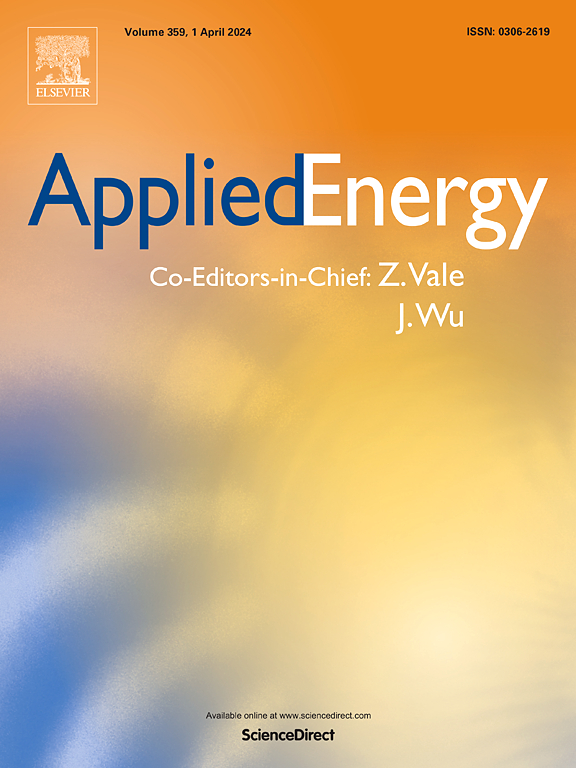Thermophotovoltaic performance metrics and techno-economics: Efficiency vs. power density
IF 10.1
1区 工程技术
Q1 ENERGY & FUELS
引用次数: 0
Abstract
Thermophotovoltaics (TPV) are a promising new approach for converting heat to electricity. Their performance is primarily characterized by two metrics: efficiency and power density. While recent works have shown high efficiency, it is important to understand how both of these metrics impact the techno-economics of a TPV system as efforts to commercialize the technology advance. In this work, we develop the first unification of efficiency and power density into a single techno-economic metric based on the levelized cost of electricity (LCOE). We find that the LCOE can be broken into two parts: heating cost, including infrastructure and inputs for providing heat to the TPV cells, and cell cost, the capital cost of the TPV cells. We show that systems with high heating costs should prioritize TPV efficiency, while systems with high cell costs should prioritize power density. We then develop a model to identify the most impactful cell properties in improving the important performance metric and reducing system LCOE. Namely, improving spectral control with increased back-surface reflectance is the most effective to reduce LCOE in systems with high infrastructural costs, while increasing the view factor and reducing front-surface reflectance are most critical in systems with high TPV cell cost. Improving just one or two of these properties can reduce the LCOE by 25–75 %, reaching competitive values ∼8 ¢/kWh-e, less than the average cost of electricity in the US. This study thus elucidates which TPV performance metric is more important for system techno-economics and how to maximize it.

求助全文
约1分钟内获得全文
求助全文
来源期刊

Applied Energy
工程技术-工程:化工
CiteScore
21.20
自引率
10.70%
发文量
1830
审稿时长
41 days
期刊介绍:
Applied Energy serves as a platform for sharing innovations, research, development, and demonstrations in energy conversion, conservation, and sustainable energy systems. The journal covers topics such as optimal energy resource use, environmental pollutant mitigation, and energy process analysis. It welcomes original papers, review articles, technical notes, and letters to the editor. Authors are encouraged to submit manuscripts that bridge the gap between research, development, and implementation. The journal addresses a wide spectrum of topics, including fossil and renewable energy technologies, energy economics, and environmental impacts. Applied Energy also explores modeling and forecasting, conservation strategies, and the social and economic implications of energy policies, including climate change mitigation. It is complemented by the open-access journal Advances in Applied Energy.
 求助内容:
求助内容: 应助结果提醒方式:
应助结果提醒方式:


